Zettl Research GroupCondensed Matter Physics |
|||
|
| High-Order Fractal Quantum Oscillations in Graphene/BN Superlattices in the Extreme Doping LimitRecent studies of van der Waals heterostructures and superlattices have revealed intriguing quantum phenomena, but these have been largely studied only in the moderate carrier density regime. We have applied an electron beam doping technique, newly developed in our laboratory, to create both ultrahigh electron and ultrahigh hole densities in graphene/BN superlattices, reaching well beyond the dielectric breakdown limit. In this extreme doping regime we explore high-temperature fractal Brown-Zak (BZ) quantum oscillations. We observe non-monotonic carrier-density dependence of fractal BZ states, and up to fourth-order fractal BZ features despite strong electron-hole asymmetry. Tight-binding simulations performed by theoretical collaborators qualitatively reproduce all observed fractal BZ features, and we attribute the non-monotonic dependence to the weakening of superlattice effects at high carrier densities.The first article reporting this work in Physical Review Letters can be found here.
|
|
|
Graphene-Sealed Flow Cells for In Situ Transmission Electron Microscopy of Liquid SamplesIn this work, a graphene-windowed flow cell (GFC) is described which combines the microfluidic functionalities of a silicon nitride flow cell with the high electron transparency and reduction in charging of a graphene liquid cell. The GFC allows liquid reagents to be introduced and liquid pressures to be modulated in situ, making it possible to monitor a variety of new reactions and chemical phenomena that were previously difficult to study. As a proof of concept, the GFC is used to monitor the dynamics of gold nanoparticles and the crystallization of uranyl acetate. These experiments show that the graphene flow cell could have major implications in advancing the understanding of nucleation and chemical dynamics processes in solution.The first article reporting this work in ACS Nano can be found here. | |
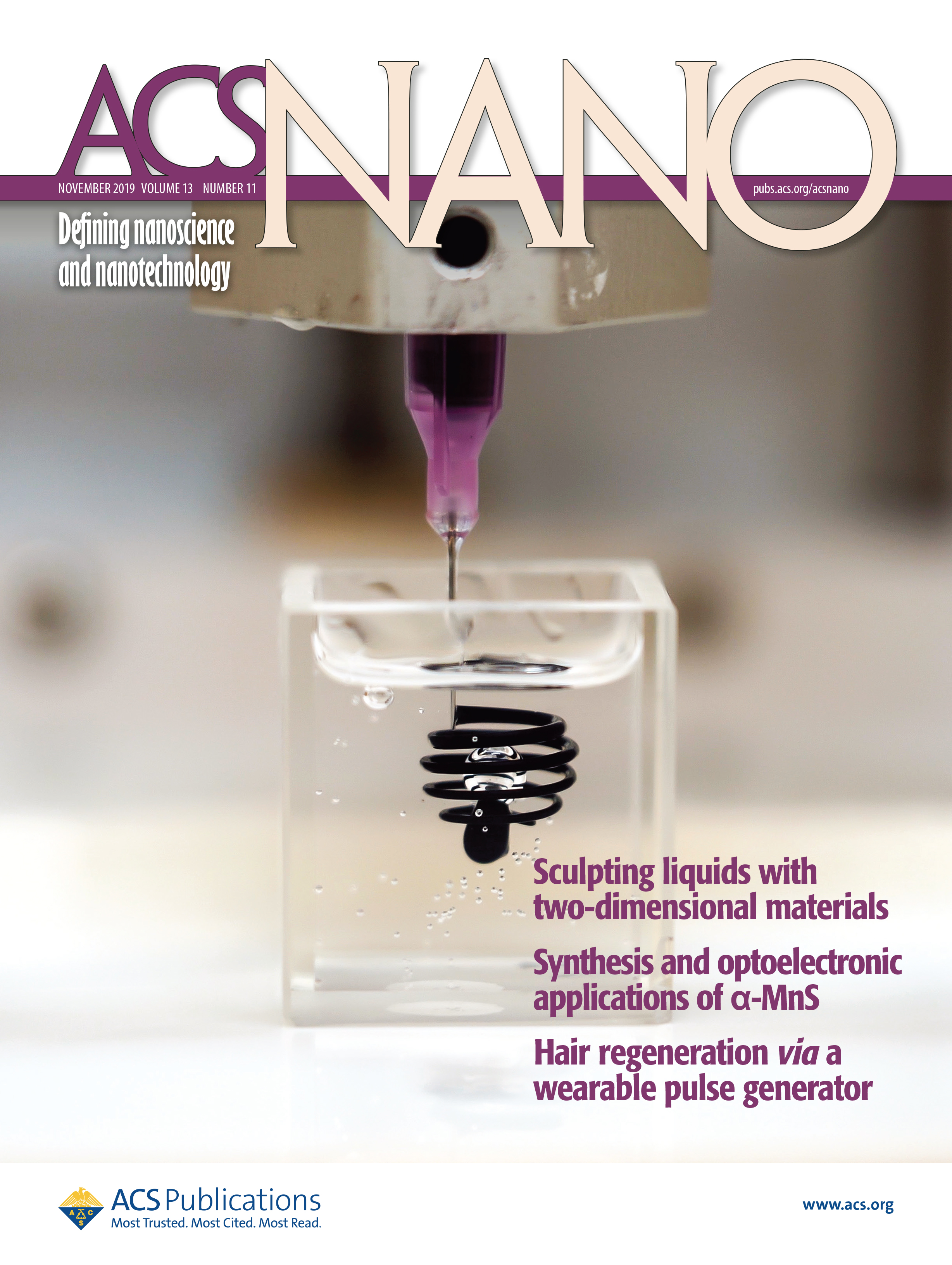 |
Sculpting Liquids with Two-Dimensional Materials: The Assembly of Ti3C2Tx MXene Sheets at Liquid-Liquid Interfaces
MXenes are two-dimensional (2D) transition metal carbides or nitrides produced by etching aluminum or silicon from a bulk MAX phase (M=transition metal, A= Group 13 or 14 element, X= C, N). This etching process imparts a negative surface charge on the nanosheets, yielding aqueous or organic inks that are amenable to a variety of printing processes. MXenes also show high electrical and thermal conductivity, making these materials attractive for electrochemical and energy storage applications.By combining the MXene sheets with a surfactant, it is possible to stabilize the particles at liquid-liquid interfaces through a jamming effect. In this work, the jamming effect has been exploited to 3D print arbitrary designs of MXene inks in an organic solvent. The reconfigurable nature of this entirely liquid system allows on-demand formation of complex constructs with potential applications in re-configurable electronic, electromagnetic and electrochemical devices.The first article reporting this work in ACS Nano can be found here. | |
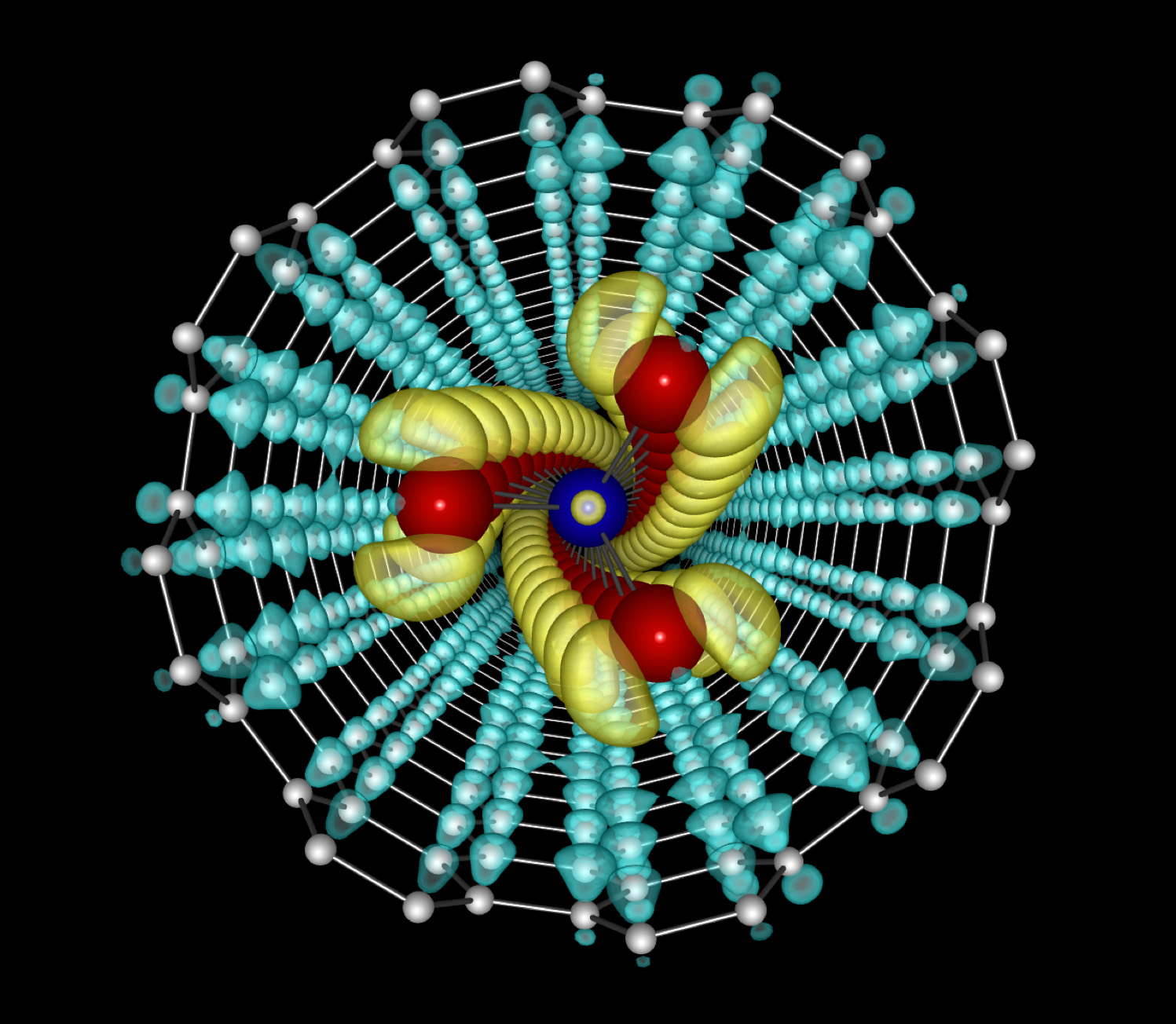 |
Atomic and electronic structures of single-chain NbSe3
We have synthesized the quasi–one-dimensional transition metal trichalcogenide NbSe3 (niobium triselenide) in the few-chain limit, including the realization of isolated single chains. The chains are encapsulated in protective boron nitride or carbon nanotube sheaths to prevent oxidation and to facilitate characterization. Transmission electron microscopy reveals static and dynamic structural torsional waves not found in bulk NbSe3 crystals. Electronic structure calculations indicate that charge transfer drives the torsional wave instability. Very little covalent bonding is found between the chains and the nanotube sheath, leading to relatively unhindered novel longitudinal and torsional dynamics for the encapsulated chains.The first article reporting this work in Science can be found here. | |
  Winner of the 2015 R&D 100 Award! |
EPIC BNNTsBoron nitride nanotubes (BNNTs), first synthesized in 1995 by the Zettl group, are the world’s lightest, strongest insulating fibers. Their greater chemical resistance and thermal stability compared to carbon nanotubes, in additional to superior optical, radiation-absorption, and piezoelectric properties to name a few, make them excellent candidates for use in metal and ceramics matrix composites for ultra-high toughness and fracture resistant alloys and high performance ceramics. Unfortunately, a constraint that has severely limited the scientific study and industrial application of BNNTs is the lack of availability of the synthesized materials.Here we have developed and demonstrate a high-throughput, scalable BN nanostructure synthesis process using a novel extended pressure inductively coupled (EPIC) plasma system. The system is incredibly versatile, allowing for the continuous injection of solids, liquids, or gases directly into a variable-power plasma plume capable of operating with various gases and at high-pressures (up to 10 atm). The EPIC plasma system has thus far achieved a record output of over 35 grams per hour for pure, small diameter, highly crystalline BNNTs. The first article reporting this work in Nano Letters can be found here. A video of the BNNT synthesis is presented here: | |
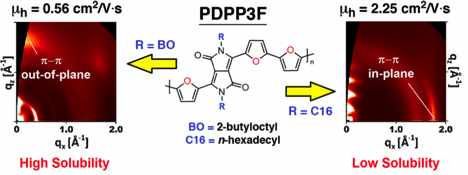 |
Nanoscale Polymer Aggregation Control to Improve Organic ElectronicsIn organic electronics, the performance of a polymer as an electronic device is significantly impacted by how the polymers pack into a solid film from solution. By changing the way polymers aggregate in nanoscale domains, the polymers can be made to pack more favorably for electrical transport.
Field effect mobility in furan-containing diketopyrrolopyrrole polymers was improved by changing the way these polymers order by side chains modifications. The polymers were synthesized with either linear hexadecyl or 2-butyloctyl side chains. The polymer with linear hexadecyl side chains packed more closely and with a higher preference to align the |
|
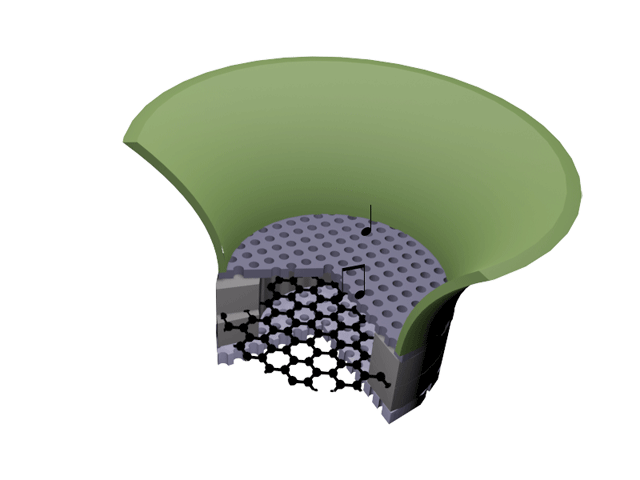 |
Electrostatic Graphene LoudspeakerGraphene has extremely low mass density and high mechanical strength, key qualities for
efficient wide-frequency-response electrostatic audio speaker design. Low mass ensures good high frequency
response, while high strength allows for relatively large free-standing diaphragms necessary for effective
low frequency response. Here we report on construction and testing of a miniaturized graphene-based
electrostatic audio transducer. The speaker/earphone is straightforward in design and operation and has
excellent frequency response across the entire audio frequency range (20Hz ~ 20kHz), with performance matching
or surpassing commercially available audio earphones.
A direct recording of the song “Sound of Silence” by Simon & Garfunkel played through the graphene loudspeaker
can be found
here. |
|
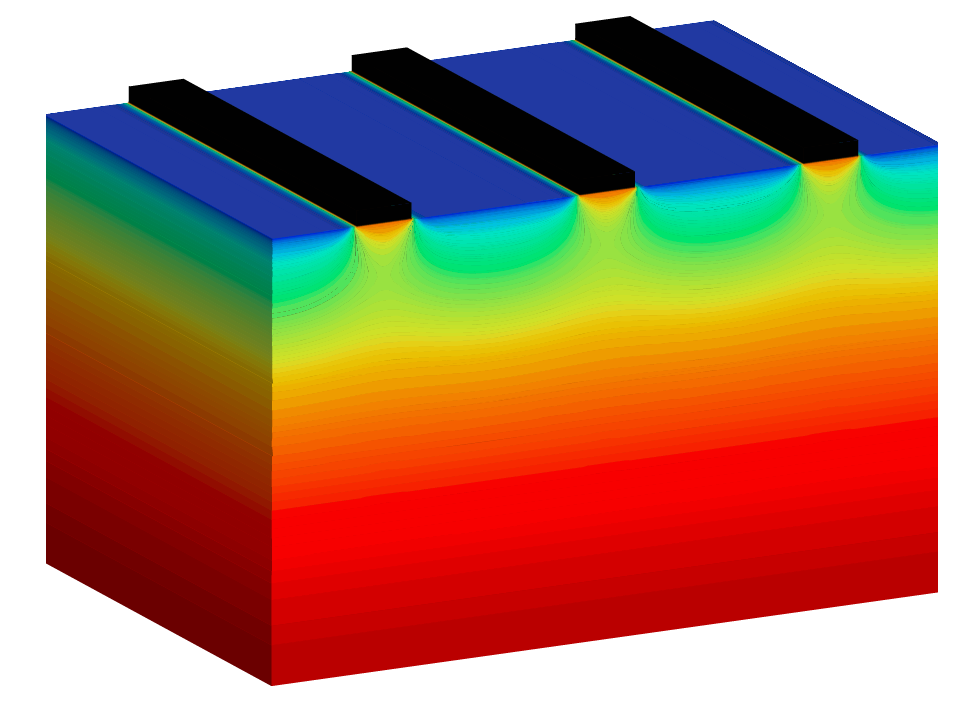 |
Screening-Engineered Field-Effect Solar CellsCurrent solar photovoltaic technologies face a cost-to-efficiency trade-off that has slowed widespread implementation, due in large part to the cost or difficulty in forming p-n junctions in semiconductors. Few semiconductors can be successfully chemically doped, and only a handful more can form high quality heterojunctions. We have developed a new architecture, screening-engineered field-effect photovoltaics (SFPV), in which a carefully designed partially-screening top electrode allows for simultaneous carrier modulation (via an applied electric field) and electrical contact to the photoactive semiconductor. This allows for high quality p-n junction formation in a wide class of low-cost, earth-abundant, and non-toxic materials that are difficult if not impossible to dope by conventional chemical methods. Our approach provides what could be an important cost-effective and environmentally friendly alternative that would accelerate the usage of solar energy. We have constructed fully functional device structures using silicon (Si) and zinc phosphide (Zn3P2) as semiconductor absorbers.This work is reported in two Nano Letters articles and can be found here and here. |
|
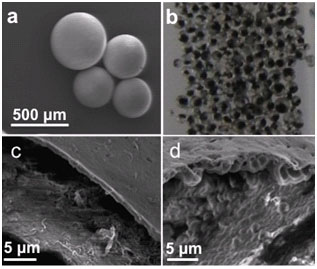 Winner of the 2010 R&D 100 Award! |
Chemicals on Demand with Phototriggerable MicrocapsulesWe report the development of phototriggerable microcapsules and demonstrate the concept of protection and remote release of chemical species. Light-rupturable, liquid-filled microcapsules were prepared by coencapsulation of carbon nanotubes using a simple and robust interfacial polymerization technique. The incorporation of carbon nanotubes endows the microcapsules with the ability to respond to an external optical event. The triggered release of the liquid contents for the microcapsules may be achieved either in air or within a liquid medium via irradiation with a near-IR laser. Rupture of the impermeable shell-wall under irradiation is presumed to be due to an increase in internal pressure due to optothermal heating of the CNTs. The storage and triggered release of reactive small molecules and catalysts was demonstrated in the context of remotely initiated “click” reaction and ring-opening metathesis polymerization. A copy of the artical featured in the Journal of the American Chemical Society (ACS Publications) may be found here. |
|
A Direct Conversion of Light into WorkCurrent technology and research on solar energy conversion often intrinsically relies on the production of energy storage and distribution systems to facilitate the production of useful work. Research in our laboratories has uncovered a mechanism for converting solar energy into work in a more direct fashion. We exploit optothermal heating to produce surface tension gradients which result in propulsive forces on floating objects. These forces are essentially converting solar power directly into useful work. Small boats floating on water are propelled and steered using this process and small rotors are rotationally driven. This work is featured in the Journal of the American Chemical Society here, and supplementary information including artwork and images from the paper can be found here. |
||
Watching Atoms Move at the Edge of a 2D CrystalAlthough the physics of materials at surfaces and edges has been extensively studied, the movement of individual atoms at an isolated edge has not been directly observed in real time. With the TEAM 0.5 transmission electron microscope capable of simultaneous atomic spatial resolution and one-second temporal resolution, we recorded the dynamics of carbon atoms at the edge of a hole in a suspended, single atomic layer of graphene. We determined the stability and described the dynamics of different edge configurations. This work is featured in the March 27, 2009 issue of Science (paper and cover). Supplementary information including artwork and images from the paper can be found here. |
||
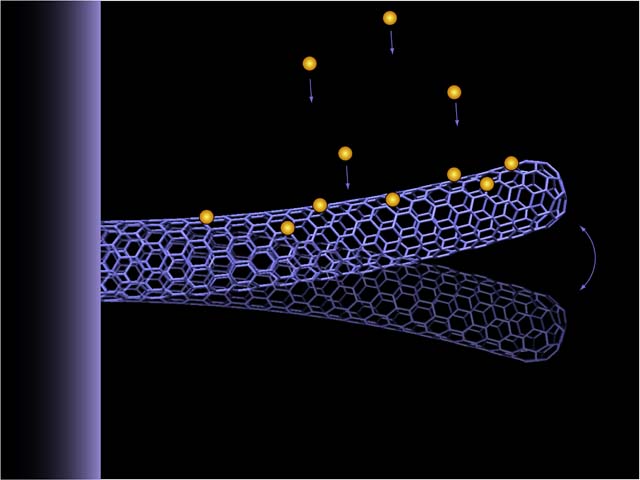 |
An Atomic-Resolution Nanomechanical Mass SensorNanoscale mechanical resonators are exquisite sensors for a variety of quantities such as force, position, and mass. Using a carbon nanotube-based nanomechanical resonator, we have constructed an atomic-resolution mass sensor. As atoms or molecules land on the resonator, they induce a shift in its mechanical resonance frequency from which it is possible to infer the mass of the adsorbed particle. Using this technique, we were able to measure the mass of a single gold atom. The Nature Nanotechnology paper describing our work can be found here. Supplementary information including artwork and images from the paper can be found here. |
|
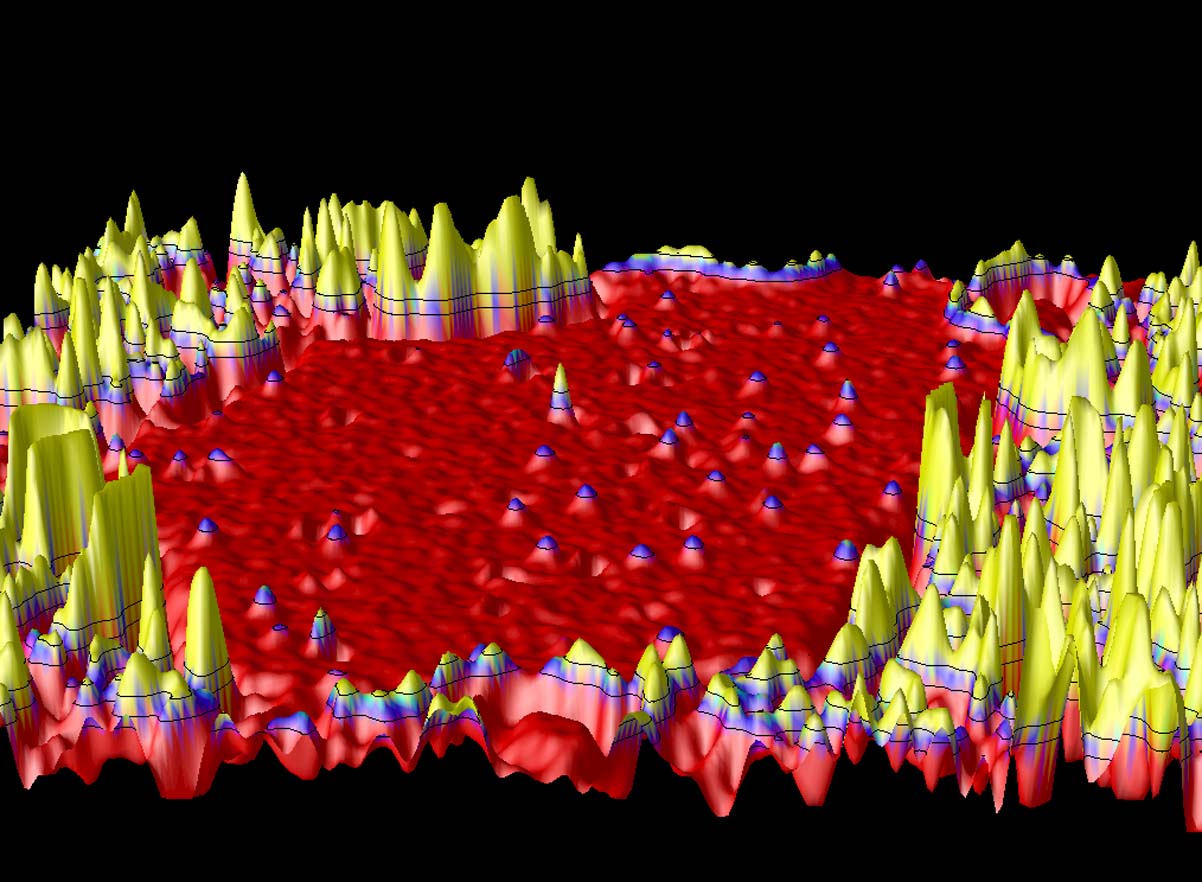 |
Imaging and Dynamics of Light Atoms and Molecules on GrapheneWe have developed a method by which even a modest-resolution transmission electron microscope (TEM) can be used to image isolated light (low-Z) atoms and molecules at room temperature. The dynamics of single atoms and molecular adsorbates, as well as the dynamics of nanoscale defects and vacancies in single-layer graphene, can also be observed. The Nature paper describing our work can be found here. Supplementary information, including TEM images of individual atoms, and movies of molecule dynamics, can be found here. |
|
 |
Nanotube radioWe have constructed a fully functional, fully integrated radio receiver, orders-of-magnitude smaller than any previous radio, from a single carbon nanotube. A copy of our Nano Letters manuscript may be found here. Supplementary images and movies are available here. |
|
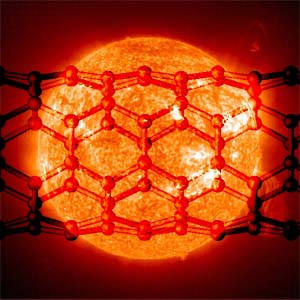 |
Extreme Thermal Test PlatformWe have developed a thermal test platform capable of determining the electrical and thermal conductivity, as well as the thermal stability, of individual nanoscale objects to over 4,000K. The platform also yields simultaneous real-time atomic resolution imaging of the object as it evolves in time and temperature. A copy of the Physical Review Letter describing the platform and its application to carbon nanotubes and gold nanocrystals can be found here. Supplementary images and movies are available here. |
|
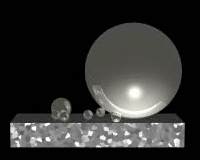 |
Nanoelectromechanical
|
|
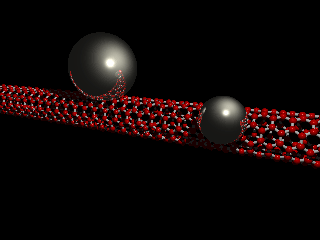 |
Nanoscale mass conveyorWe have developed a technique to move individual atoms back and forth along a carbon nanotube. A copy of the Letter to Nature can be found here. Supplementary images and movies are available here. |
|
|
Synthetic Rotational NanomotorOur group has been able to create the world's smallest synthetic motor using a multiwall carbon nanotube. A copy of the Letter to Nature can be found here. Supplementary images and movies are available here.Winner of the 2004 R&D 100 Award! |